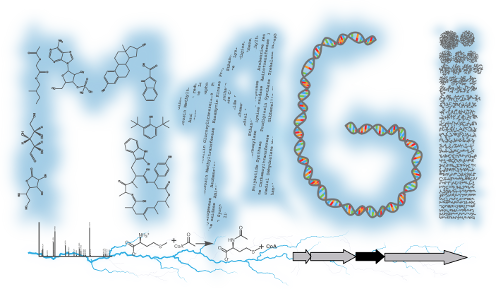Informatics and modeling
Metagenomics and single-cell sequencing have enabled glimpses into the vast metabolic potential of Earth’s collective biological systems. Yet, for the most part we can’t accurately predict nor identify the products of most biosynthetic pathways. Most of what we know of microbial biochemistry is based on characterization of a few model microorganisms, and these findings have been extended through sequence correlations to the rest of sequence space. We seek to develop fundamentally different approaches for approaching this problem.

To do this, we leverage web-based tools integrated with high-performance-computing, advanced algorithms, and creative integration of associated data to identify, explain, and process mass spectrometry data. We seek to make our code as open as possible and it can be found at https://github.com/biorack.
Resources:
In metabolomics, functional genomics, metabolic engineering & synthetic biology, and natural product discovery research, there is a tremendous amount of potential that these techniques seek to unlock. This research will guide us towards a future where biological systems are understood well enough to be rationally and reliably designed.
